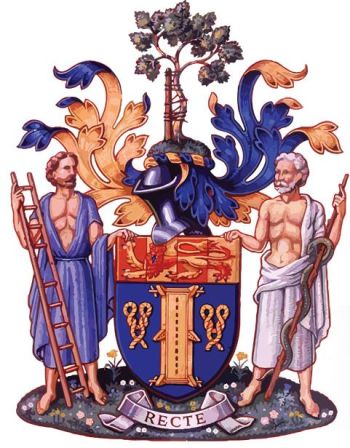British Orthopaedic Association: Difference between revisions
Knorrepoes (talk | contribs) m (Text replacement - "{{media1}}" to "{{media}}") |
Knorrepoes (talk | contribs) m (Text replacement - "|alt=Arms (crest) of {{PAGENAME}}]]↵|↵'''Institutional Heraldry of the World''' : ↵* United Kingdom 60 px|right↵" to "|alt=Arms (crest) of {{PAGENAME}}]] | <center>''' {{uc:{{PAGENAME}}}} '''</center><br> '''Institutional Heraldry of the World''' : * United Kingdom 60 px|right") Tags: Mobile edit Mobile web edit |
||
| Line 3: | Line 3: | ||
|[[File:{{PAGENAME}}.jpg|350 px|center|alt=Arms (crest) of {{PAGENAME}}]] | |[[File:{{PAGENAME}}.jpg|350 px|center|alt=Arms (crest) of {{PAGENAME}}]] | ||
| | | | ||
<center>''' {{uc:{{PAGENAME}}}} '''</center><br> | |||
'''[[:Category:Institutional heraldry|Institutional Heraldry]] of the World''' : | '''[[:Category:Institutional heraldry|Institutional Heraldry]] of the World''' : | ||
* United Kingdom [[File:unitedkingdom-flag.gif|60 px|right]] | * United Kingdom [[File:unitedkingdom-flag.gif|60 px|right]]** England<br><br> | ||
** England<br><br> | |||
|} | |} | ||
Revision as of 04:52, 29 November 2023
|
Institutional Heraldry of the World :
|
| English |
Arms : Azure, a scamnum between two cords nowed Or; on a chiefpaly of four gules and gold a lion passant guardant counterchanged. |
|}
Origin/meaning
The arms were officially granted on July 16, 1952.
The shield shows an ancient traction table called a scamnum, complete with ropes for attaching the patient, said to have been used by Hippocrates, and obsolete for several centuries. It has no relevance to contemporary orthopaedic practice.
In the chief the lion is a clever reference to Wales through it’s similarity to the arms of Llewellyn the Great, or Llewellyn the Last to the English. The personal standard of the present Prince of Wales consists of Llewellyn’s arms with the addition of a green shield bearing the Prince of Wales coronet, which has only one arch instead of the two on the royal crown.
The red and yellow of the lion are used alternatively (counterchanged), a form often associated with medicine, probably because of the ancient arms of St Bartholomew's Hospital. The shield of the BMA, for example, is counterchanged in blue and yellow, the livery of the Apothecaries, and also has a lion on its chief. In passing, it is worth noting that the arms of the BMA are said to show the sleeve of a physician’s gown. A happy coincidence, then, that the family arms of the founder of the BMA, Sir Charles Hastings, bore exactly the same device.
The supporters are Hippocrates and Aesculapius. Hippocrates carries a ladder, used as recently as the Middle Ages to reduce dislocated shoulders. A rung has been removed to avoid breaking the patient’s neck. Again, no relevance to modern orthopaedics.
The crest is a plane tree, said to represent the tree that shaded Hippocrates, in the form of a Tree of Andry. There are many plane trees in Lincoln’s Inn Fields, where the BOA is based and the plane tree may have been a reference to Lincoln’s Inn Fields.
The supporters and shield stand on a mound with the rose, thistle and daffodill all miraculously in bloom at once. The motto is “Recte” which, "…is to be translated not only as straightly but as uprightly – befitting, proper and good”, all qualities consistent with orthopaedic surgery and Good Medical Practice.
Literature: https://www.boa.ac.uk/
| Heraldry of the World |
| British heraldry portal Civic heraldry of the United Kingdom |
|
Contact and Support
Partners:
Your logo here ?
Contact us
© since 1995, Heraldry of the World, Ralf Hartemink 
Index of the site
| Heraldry of the World |
| British heraldry portal Civic heraldry of the United Kingdom |
|
Contact and Support
Partners:
Your logo here ?
Contact us
© since 1995, Heraldry of the World, Ralf Hartemink 
Index of the site












